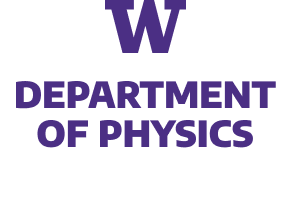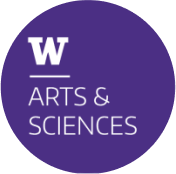IQuS Publications
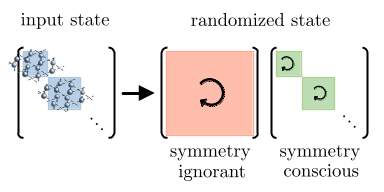
Randomized measurement protocols for lattice gauge theories
Randomized measurement protocols, including classical shadows, entanglement tomography, and randomized benchmarking are powerful techniques to estimate observables, perform state tomography, or extract the entanglement properties of quantum states. While unraveling the intricate structure of quantum states is generally difficult and resource-intensive, quantum systems in nature are often tightly constrained by symmetries. This can be leveraged by the symmetry-conscious randomized measurement schemes we propose, yielding clear advantages over symmetry-blind randomization such as reducing measurement costs, enabling symmetry-based error mitigation in experiments, allowing differentiated measurement of (lattice) gauge theory entanglement structure, and, potentially, the verification of topologically ordered states in existing and near-term experiments. Crucially, unlike symmetry-blind randomized measurement protocols, these latter tasks can be performed without relearning symmetries via full reconstruction of the density matrix.
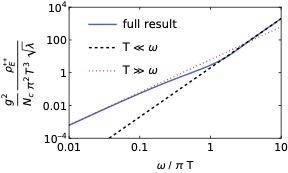
Chromoelectric field correlator for quarkonium transport in the strongly coupled N=4 Yang-Mills plasma from AdS/CFT
Previous studies have shown that a gauge-invariant correlation function of two chromoelectric fields connected by a straight timelike adjoint Wilson line encodes crucial information about quark-gluon plasma (QGP) that determines the dynamics of small-sized quarkonium in the medium. Motivated by the successes of holographic calculations to describe strongly coupled QGP, we calculate the analog gauge-invariant correlation function in strongly coupled $\mathcal{N}=4$ supersymmetric Yang-Mills theory at finite temperature by using the AdS/CFT correspondence. Our results indicate that the transition processes between bound and unbound quarkonium states are suppressed in strongly coupled plasmas, and moreover, the leading contributions to these transition processes vanish in both the quantum Brownian motion and quantum optical limits of open quantum system approaches to quarkonia.

SU(2) Non-Abelian Gauge Theory on a Plaquette Chain Obeys Eigenstate Thermalization Hypothesis
We test the eigenstate thermalization hypothesis (ETH) for 2+1 dimensional SU(2) lattice gauge theory. By considering the theory on a chain of plaquettes and truncating basis states for link variables at j=1/2, we can map it onto an Ising chain and numerically exactly diagonalize the Hamiltonian for reasonably large lattice sizes. We find energy level repulsion in momentum sectors with no remaining discrete symmetries. We study two local observables made up of Wilson loops and calculate their matrix elements in the energy eigenbasis, which are shown consistent with the ETH. Our study implies a subset of states in the physical Hilbert space of Quantum Chromodynamics (QCD) obeys the ETH.
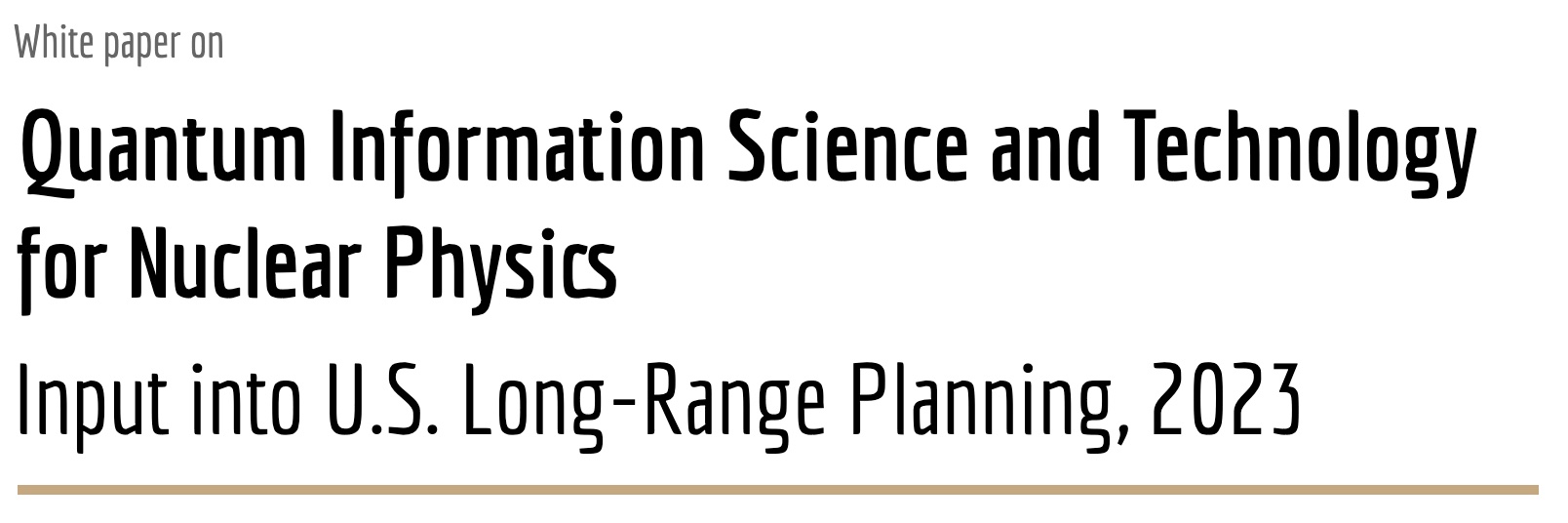
White paper on Quantum Information Science and Technology for Nuclear Physics. Input into U.S. Long-Range Planning, 2023.
In preparation for the 2023 NSAC Long Range Plan (LRP), members of the Nuclear Science community gathered to discuss the current state of, and plans for further leveraging opportunities in, QIST in NP research at the Quantum Information Science for U.S. Nuclear Physics Long Range Planning workshop [4], held in Santa Fe, New Mexico on January 31—Feb 1, 2023. The workshop, jointly-sponsored by Los Alamos National Laboratory (LANL) and the InQubator for Quantum Simulation (IQuS), included 45 in-person participants and 53 remote attendees. The outcome of the workshop identified strategic plans and requirements for the next 5-10 years to advance quantum sensing and quantum simulations within NP, and to develop a diverse quantum-ready workforce. The plans include resolutions endorsed by the participants to address the compelling scientific opportunities at the intersections of NP and QIST. These endorsements are aligned with similar affirmations by the LRP Computational Nuclear Physics and AI/ML Workshop, the Nuclear Structure, Reactions, and Astrophysics LRP Town Hall, and the Fundamental Symmetries, Neutrons, and Neutrinos LRP Town Hall communities.

Gravitational Wave Backgrounds from Colliding ECOs
Long baseline atom interferometers offer an exciting opportunity to explore mid-frequency gravitational waves. In this work we survey the landscape of possible contributions to the total “gravitational wave background” in this frequency band and advocate for targeting this observable. Such an approach is complimentary to searches for resolved mergers from individual sources and may have much to reveal about the Universe. We find that the inspiral phases of stellar-mass compact binaries cumulatively produce a signal well within reach of the proposed AION-km and AEDGE experiments. Hypothetical populations of dark sector exotic compact objects, harbouring just a tiny fraction of the dark energy density, could also generate signatures unique to mid- and low-frequency gravitational wave detectors, providing a novel means to probe complexity in the dark sector.

Demonstration of a quantum-classical coprocessing protocol for simulating nuclear reactions
Quantum computers hold great promise for arriving at exact simulations of nuclear dynamical processes (e.g., scattering and reactions) that are paramount to the study of nuclear matter at the limit of stability and to explaining the formation of chemical elements in stars. However, quantum simulations of the unitary (real) time dynamics of fermionic many-body systems require a currently prohibitive number of reliable and long-lived qubits. We propose a co-processing algorithm for the simulation of real-time dynamics in which the time evolution of the spatial coordinates is carried out on a classical processor, while the evolution of the spin degrees of freedom is carried out on a quantum processor. This hybrid algorithm is demonstrated in a quantum simulation of the scattering of two neutrons performed on the Lawrence Berkeley National Laboratory’s Advanced Quantum Testbed. We show that, after implementation of error mitigation strategies to improve the accuracy of the algorithm in addition to the use of either circuit compression techniques or tomography as methods to elucidate the onset of decoherence, this initial demonstration validates the principle of the proposed co-processing scheme. We anticipate that a generalization of this present scheme will open the way for (real-time) path integral simulations of nuclear scattering.

Quantum Simulations in Effective Model Spaces (I): Hamiltonian Learning-VQE using Digital Quantum Computers and Application to the Lipkin-Meshkov-Glick Model
The utility of effective model spaces in quantum simulations of non-relativistic quantum many-body systems is explored in the context of the Lipkin-Meshkov-Glick model of interacting fermions. We introduce an iterative hybrid-classical-quantum algorithm, Hamiltonian learning variational quantum eigensolver (HL-VQE), that simultaneously optimizes an effective Hamiltonian, thereby rearranging entanglement into the effective model space, and the associated ground-state wavefunction. HL-VQE is found to provide an exponential improvement in Lipkin-Meshkov-Glick model calculations, compared to a naive truncation without Hamiltonian learning, throughout a significant fraction of the Hilbert space. Quantum simulations are performed to demonstrate the HL-VQE algorithm, using an efficient mapping where the number of qubits scales with the log of the size of the effective model space, rather than the particle number, allowing for the description of large systems with small quantum circuits. Implementations on IBM’s QExperience quantum computers and simulators for 1- and 2-qubit effective model spaces are shown to provide accurate and precise results, reproducing classical predictions. This work constitutes a step in the development of entanglement-driven quantum algorithms for the description of nuclear systems, that leverages the potential of noisy intermediate-scale quantum (NISQ) devices.

Gauge Invariance of Non-Abelian Field Strength Correlators: the Axial Gauge Puzzle
Many transport coefficients of the quark-gluon plasma and nuclear structure functions can be written as gauge invariant correlation functions of non-Abelian field strengths dressed with Wilson lines. We discuss the applicability of axial gauge n.A=0 to calculate them. In particular, we address issues that appear when one attempts to trivialize the Wilson lines in the correlation functions by gauge-fixing. We find it is always impossible to completely remove the gauge fields n.A in Wilson lines that extend to infinity in the n-direction by means of gauge transformations. We show how the obstruction appears in an explicit example of a perturbative calculation, and we also explain it more generally from the perspective of the path integral that defines the theory. Our results explain why the two correlators that define the heavy quark and quarkonium transport coefficients, which are seemingly equal in axial gauge, are actually different physical quantities of the quark-gluon plasma and have different values. Furthermore, our findings provide insights into the difference between two inequivalent gluon parton distribution functions.

Preparation for Quantum Simulation of the 1+1D O(3) Non-linear σ-Model using Cold Atoms
The 1+1D O(3) non-linear σ-model is a model system for future quantum lattice simulations of other
asymptotically-free theories, such as non-Abelian gauge theories. We find that utilizing dimensional reduction
can make efficient use of two-dimensional layouts presently available on cold atom quantum simulators. A
new definition of the renormalized coupling is introduced, which is applicable to systems with open boundary
conditions and can be measured using analog quantum simulators. Monte Carlo and tensor network calculations
are performed to determine the quantum resources required to reproduce perturbative short-distance observables.
In particular, we show that a rectangular array of 48 Rydberg atoms with existing quantum hardware capabilities
should be able to adiabatically prepare low-energy states of the perturbatively-matched theory. These states can
then be used to simulate non-perturbative observables in the continuum limit that lie beyond the reach of classical
computers.
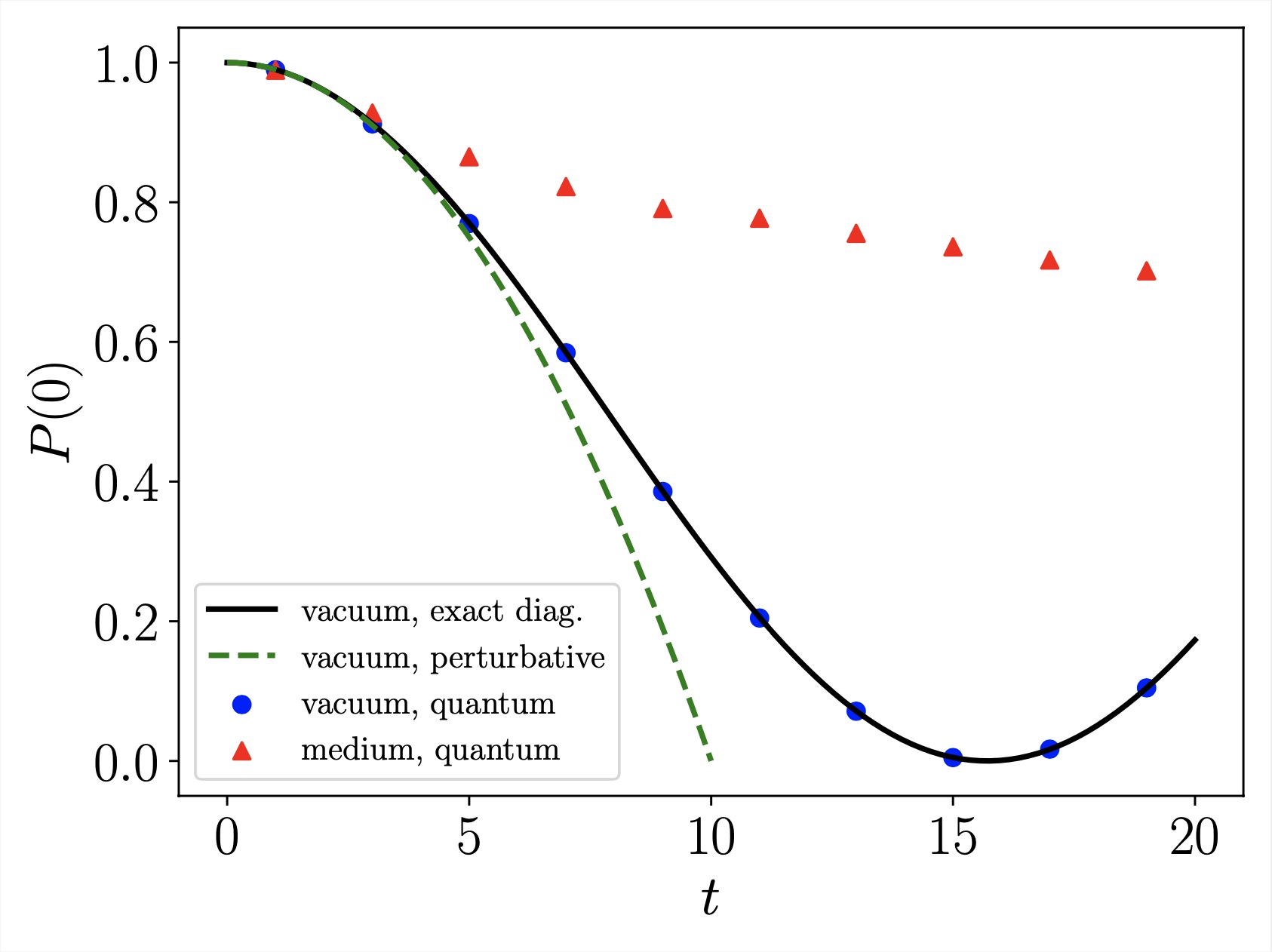
Quantum Simulation of Light-Front QCD for Jet Quenching in Nuclear Environments
We develop a framework to simulate jet quenching in nuclear environments on a quantum computer. The formulation is based on the light-front Hamiltonian dynamics of QCD. The Hamiltonian consists of three parts relevant for jet quenching studies: kinetic, diffusion and splitting terms. In the basis made up of $n$-particle states in momentum space, the kinetic Hamiltonian is diagonal. Matrices representing the diffusion and splitting parts are sparse. The diffusion part of the Hamiltonian depends on classical background gauge fields, which need to be sampled classically before constructing quantum circuits for the time evolution. The cost of the sampling scales linearly with the time length of the evolution and the momentum grid volume. The framework automatically keeps track of quantum interference and thus it can be applied to study the Landau-Pomeranchuk-Migdal effect in cases with more than two splittings, which is beyond the scope of state-of-the-art analyses, no matter whether the medium is static or expanding, thin or thick, hot or cold. We apply this framework to study a toy model and gluon in-medium radiation on a small lattice. The Landau-Pomeranchuk-Migdal effect that suppresses the total radiation probability is observed in the quantum simulation results of both the toy model and the gluon case.

